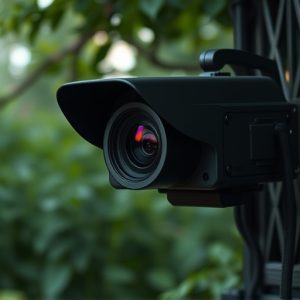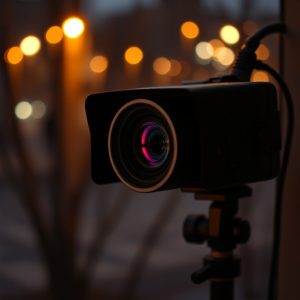Unveiling Hidden Cameras: Scanning Techniques & Legal Insights on Battery-Powered Nanny Cams
Battery-powered covert nanny cameras have advanced with features like motion detection, night vision…….
Battery-powered covert nanny cameras have advanced with features like motion detection, night vision, and smartphone apps, enhancing flexibility and discretion for indoor/outdoor use. Traditional detection methods are often ineffective against modern gadgets, prompting the development of innovative techniques such as motion sensors and RF signal detection. These hidden cameras raise legal and ethical concerns, requiring informed consent and adherence to global regulations to avoid severe consequences.
Hidden recording devices, particularly battery-powered covert nanny cameras, have evolved from simple, low-tech setups to sophisticated digital tools. This article delves into the world of these concealed surveillance devices, exploring both traditional and advanced detection methods. We’ll guide you through understanding battery-powered covert nanny cameras, scanning strategies for hidden signals, and legal considerations surrounding their use. By the end, readers will be equipped with knowledge on navigating this complex landscape.
- Understanding Battery-Powered Covert Cameras: A Brief Overview
- Detection Methods: Traditional vs. Advanced Techniques
- Scanning and Identification Strategies for Hidden Signals
- Legal Considerations and Ethical Use of Covert Recording Devices
Understanding Battery-Powered Covert Cameras: A Brief Overview
Battery-powered covert nanny cameras have become increasingly sophisticated, offering advanced features while maintaining a discreet profile. These devices are designed to operate autonomously, relying on rechargeable batteries for continuous monitoring. The compact and lightweight design allows them to be easily hidden in various locations, making them ideal for home security or surveillance purposes.
Unlike traditional wired cameras, battery-powered covert cameras provide flexibility and ease of installation. They can be strategically placed indoors or outdoors, capturing video evidence without drawing attention. Advanced models feature motion detection, night vision capabilities, and even remote access via smartphone apps, ensuring users stay connected and informed while maintaining a subtle presence.
Detection Methods: Traditional vs. Advanced Techniques
Detection Methods: Traditional vs. Advanced Techniques
In the realm of hidden recording devices, such as battery-powered covert nanny cameras, traditional detection methods have relied on visual and audio cues. These include noticing unusual objects or activity in a room, listening for faint sounds like clicking noises (common in older models), or even smelling chemical fumes released by some devices. However, these techniques are often cumbersome and easily bypassed by sophisticated modern gadgets designed to be virtually undetectable.
Advanced scanning methods have emerged to counter these covert threats. Technologies like advanced motion sensors, heat signature analysis, and RF (radio frequency) signal detection have been integrated into security systems. These innovative tools can pinpoint hidden cameras with greater accuracy, especially in crowded or cluttered spaces. For instance, RF signal scanners can identify devices transmitting data, allowing security personnel to trace the source back to its location. Such advanced techniques represent a significant leap forward in countering the growing use of battery-powered covert nanny cameras and similar hidden recording devices.
Scanning and Identification Strategies for Hidden Signals
Hidden recording devices, often disguised as everyday items like batteries or pens, present unique challenges for detection. Scanning and identification strategies have evolved to counter this growing threat. One common method involves using specialized signal scanners that can detect electromagnetic emissions from active cameras. These scanners are particularly effective in identifying covert nannycameras, many of which operate on battery power and emit subtle but detectable signals.
Advanced techniques include frequency analysis and pattern recognition algorithms. By sweeping through various frequencies and analyzing signal patterns, security experts can pinpoint hidden devices. This method is especially useful when dealing with sophisticated battery-powered cameras that employ low-power transmission to avoid detection. Staying ahead of these technologies requires constant updates in scanning methods and a deep understanding of the ever-changing landscape of covert recording devices.
Legal Considerations and Ethical Use of Covert Recording Devices
The use of hidden recording devices, such as battery-powered covert nanny cameras, raises significant legal and ethical considerations. In many jurisdictions, the placement and operation of such devices are strictly regulated to protect privacy rights. Laws vary widely, with some regions prohibiting the use of hidden cameras entirely without explicit consent from all parties involved, while others allow their use under certain conditions, such as in public spaces or for security purposes.
Ethically, the deployment of covert recording devices should be approached with utmost care. It is essential to respect personal privacy and ensure that any surveillance is conducted responsibly. This includes obtaining informed consent from individuals who may be recorded, especially in residential or private settings. Misuse of these devices can lead to severe consequences, including civil lawsuits for invasion of privacy and criminal charges for illegal surveillance. Therefore, it’s crucial for users to understand the legal framework surrounding hidden recording devices and adhere to ethical guidelines to avoid potential legal pitfalls.
Hidden recording device signal scanning methods, particularly those used in battery-powered covert nanny cameras, have evolved significantly. From traditional to advanced techniques, detecting these devices now involves sophisticated technology and a nuanced understanding of electromagnetic signals. As the use of such devices becomes more widespread, it’s crucial to balance privacy concerns with legal considerations. Responsible usage demands ethical guidelines, ensuring these tools are employed for legitimate purposes while respecting individual privacy rights. Continuous innovation in detection methods underscores the importance of staying informed about both the capabilities and limitations of hidden recording devices.


